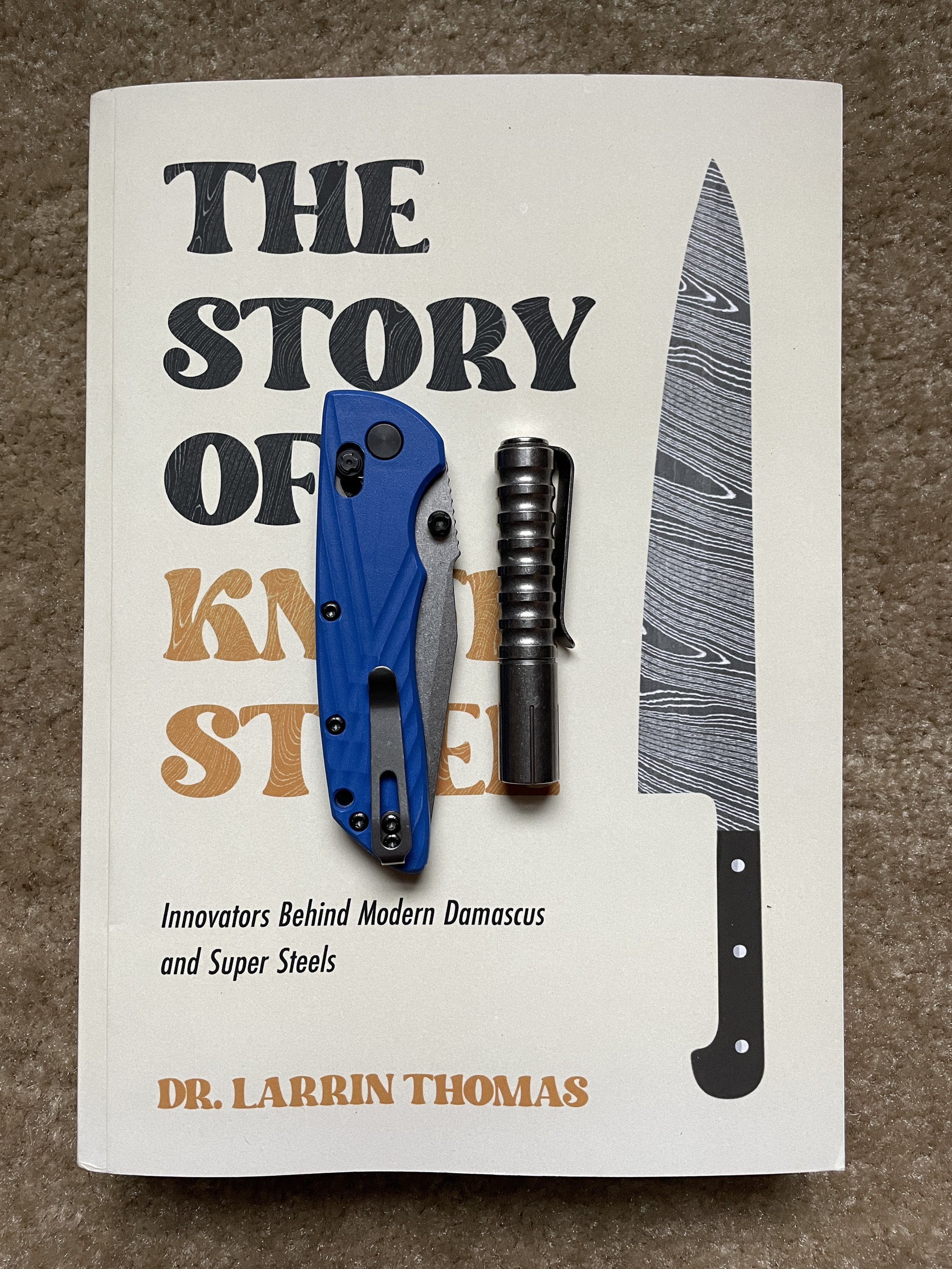Book Review: The Story of Knife Steel by Dr. Larrin Thomas
The knife community, both the IKC and the old timey knife community, have a lot of personalities that claim to have some expertise. You can find an authoritative source on steel, heat treat, ergonomics, economics, design, artistry, whatever you need. There is no shortage of people telling you they know what’s what. Some of them are right and some of them are wrong. A lot of them that are right WORK in the knife industry or related fields and so they aren’t able to share their knowledge as readily. Fortunately for us, Larrin Thomas both knows what he is talking about AND is ready to share information. A lot of the magical thinking (see e.g. a “packed edge”) that infects parts of the knife community are gone, shorn away by science and metallurgical knowledge.
In many ways, Larrin Thomas is to the knife world what Bill James was to the baseball world. Like James early on, Larrin has powerful insights that make knives better, yet he doesn’t work at a knife company. Also like James, these insights are developed from strict adherence to math and science behind the scenes. Finally like James, who was hired as a consultant that powered the Red Sox to their first World Series championship in decades, Larrin has also taken his insights and produced real world results (see Magnacut). Getting a book from Larrin is great, like getting books from Bill James. Of the two books he has written so far, both are excellent, but this one is better.
Dr. Thomas’s first book, Knife Engineering, was excellent, but it was a more technical treatise on knife steel. Being perfectly frank—I don’t think I am smart enough to read and fully understand what he wrote. I am a lawyer which means that science was not my thing, so that first book had me Googling things at a feverish pace. I learned a lot, but I also felt like a smarter, more science-oriented person would have gotten more out of the book than I did. This book, however, is a history of knife steel, and I truly and thoroughly enjoyed it.
In part it explains how we got the steels we have. Vasco Wear, a steel before my time and one that Michael Walker spoke highly of during my interview with him on the Podcast, morphed into 3V with the advent of PM technology. That in turn became a more corrosion resistant version of the same steel in the form of S30V, which has produced a number of other steels. Larrin traces the lineage of 440C into XHP and S90V. And over and over again, you can learn how one steel became and other and more critically why those evolutionary changes occurred. At the rear of the book are four charts that have changed how I view the steels we all know as it shows what their predecessors were.
In another part, the book is about the story of innovation in the knife world basically from the 19th century until today. Seeing Michael Faraday’s name alongside Chris Reeve is not only interesting, but it grounds the stuff we have and, in some ways take for granted, in the history of science. Science has become so distant from our modern culture even as technology has invaded every aspect of it that it is nice to be reminded that there is a method, a shared journey of innovation, and that, importantly, there are ways to make things better over time, that improvement really happens.
The last part of the book I enjoy is learning about the artistic methods for improving and changing the appearance of damascus. I am not a huge fan of pattern welded damascus, but in reading the book I have gained a tremendous appreciation for both the beauty of the material and the material and skill in making it. I have always thought of pattern welded damascus as gauche, but after reading the detail description of the process of making it and after seeing some more exotic creations, I am a huge fan. Now, the stuff that intrigues me isn’t the generic swirly metal that you see on production knives, but the stunning custom creations from more brilliant blacksmiths out there.
Overall, Dr. Larrin Thomas’s new book is one that is easy to recommend without reservations to just about everyone that has even a passing interesting in knives, steel, and the history of both. And if you are damascus skeptic like I was, this is tremendous eye opener. You won’t regret buying this book. And I do recommend you buy it in old-fashioned paper format. I read it once through as a traditional book, but now it works are reference book where I consult certain chapters or passages. This is an easy book to recommend. Buy it through Dr. Thomas’s link so he gets the commission. Here is the link to do that:

